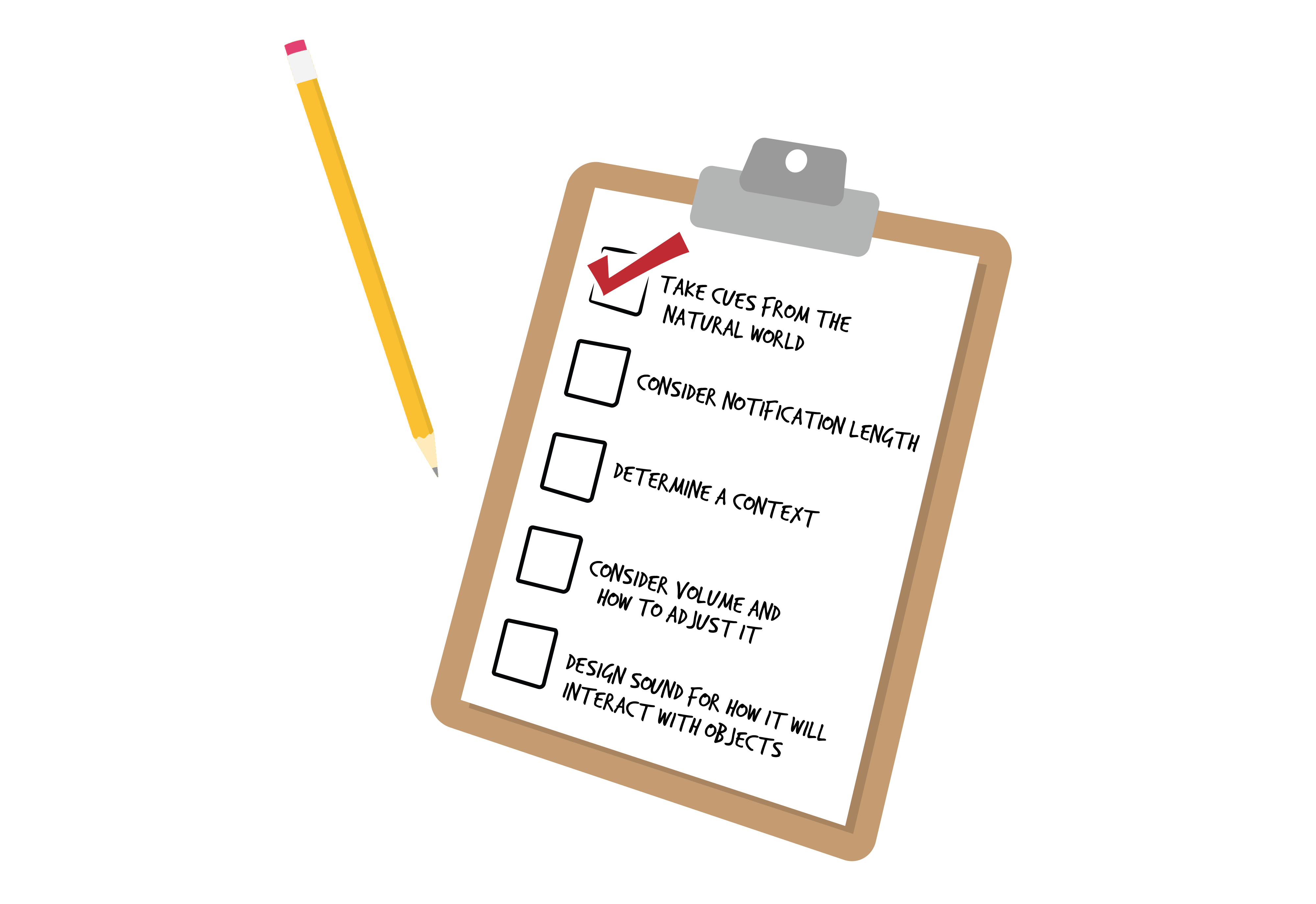
5.8 Methods for Sound Sensitization
Given that product designers are typically not sound designers it is useful to develop a sensitivity to the nuances of sounds, but it’s not necessary to become skilled auditory designers. Some of the methods that are useful and fun to develop auditory sensitivity include:
- Imitating sounds associated with a place or an activity scenario using only your mouth and non-speech noises in a practice called vocal sketching. Try imitating the sounds of filling up with gas at your local gas station or taking an elevator up several floors.
- Producing samples of possible sounds which is a process called audio prototyping. Some sounds you might want to produce could be the sounds of an egg timer, a car starting, or a pressure cooker.
- Listening to and identifying the layers of sounds in your environment, which is an exercise called a soundwalk. Take a walk around a playground listening to the sounds of children playing on the swings and slides. Record the sounds and try to identify them later.
- Creating a map, picture, or chart of the different sounds that you hear while doing an activity, which is a process called audio mapping. Some of the activities you can consider are making breakfast, shovelling snow, or working on your computer.

Sound Design Checklist
You may enjoy trying out some of the activities above and, through playful experimentation, recognize how important sound can be in providing different kinds of information in many user scenarios. Sound design follows a similar process to other aspects of design; that is why it makes sense to take initial steps to develop an awareness of the nuances of sound that enhance a person’s engagement with a product, place, or service before diving into designing sounds.

